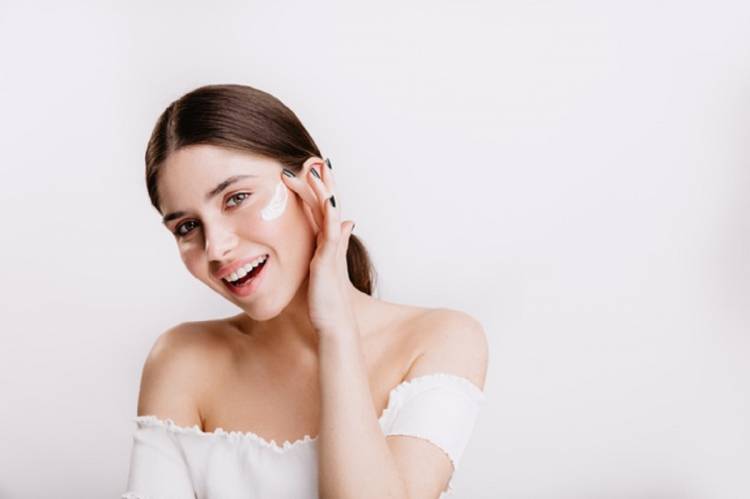
The Harmful Side Effects of Steroid Creams
Have steroid creams become a part of your daily skincare treatment? If you have eczema, psoriasis, or another type of distressing skin conditions. These creams may be your miracle drug in helping provide the type of relief you need. But use! Long term exposure or a dosage that’s too high could lead to trouble down the road. But it’s not all bad news! Knowing what to look for can help you get a grip on the problem before it starts.
The Trouble with Steroid Creams
Not all steroid creams are created equal, and neither are the areas that they are treating. For example, you can buy hydrocortisone cream with a low concentration. At your local drug store without a prescription. This cream has a 0.5 percent concentration and is the weakest steroid cream out there. That means that it is the least likely to cause problems. Yet, skin that’s raw and irritated allows more medicine to penetrate the area. So, there could be problems even with a lower dosage of steroid.
Many of the side effects that happen from steroid creams. Both over the counter and prescription, are related to long-term use. But, there are some side effects that can happen within days of starting the steroid therapy.
The Most Common Side Effects from Topical Steroids
As mentioned earlier, side effects from overusing topical steroids. It can take several days or even months to appear. Some of the most common side effects that patients experience includes itching. And burning, or a rash that looks like acne. You may even notice red spider-like marks on your skin or light spots. In some cases, people even experience increased hair growth.
There are some cases where people have more serious side effects if they use a stronger steroid for a long period of time. These side effects are pretty serious like stunted growth. Elevated blood sugar levels, and osteoporosis. Again, these side effects are only if the steroid is a large dose for a long amount of time, so it is not as common.
Here are seven of the most common side effects that come from topical steroid overuse and what you can try if this happens to you. Some of these side effects are mild while some can leave permanent results.
Here are seven of the most common side effects
1. Tachyphylaxis
This is basically when your body has grown immune to the topical steroid. Simply put, after repeated use, the drug just doesn’t work anymore.
If this happens to you, make sure you don’t apply more of the steroid or start applying it more frequently. That’s because if you apply more of the steroid, it will just increase your tolerance to the drug. Instead, try stopping the steroid for a week and then restarting it again.
2. Steroid Rosacea
Overusing steroids on the face can cause the pinkish skin tone called rosacea. Not only will your face turn red, but it can also cause pustules, which are pus clogged bumps. Basically, you’ll look like you have inflamed acne, even as an adult.
Unfortunately, if you stop using the steroid, this will make the rosacea worse. You’ll want to slowly withdrawal from the cream to minimize the flareup. Your doctor may prescribe skincare products like an oral cream or pill to help with the steroid rosacea. Often times the rosacea will respond well to these treatments, but sometimes the condition can last long-term.
3. Skin Atrophy
This is when the outside layer of your skin thins because a topical steroid has been used in the same area over and over again. When this happens, you may notice your skin will become wrinkled and shiny. You may also notice hypopigmentation or that underlying veins become more visible.
The good news about skin atrophy is that it is reversable. If you stop using the steroid, your skin will thicken back to normal. But you’ll need to be patient because this could take a few months to get your skin back.
4. Stretch Marks
The overuse of topical steroids can cause stretch marks in areas where skin touches skin. This is most common in the groin and armpits.
Unfortunately, this is a side effect that is permanent. However, your dermatologist may prescribe you a lower strength steroid that could help if the area gets itchy.
5. Alteration of Infection
In this case, the topical steroid can change your skin’s ability to fight off a bacterial or fungal infection. That’s because steroids can change the way your body’s immune system works. If this happens to you, you’ll notice that after you apply the steroid, the rash actually becomes redder and itchier. And the more steroid that is applied, the worse the area becomes.
If you notice the infection getting worse, you’ll want to stop using the topical steroid and get an antifungal treatment for the area. Of course, you’ll want to contact your dermatologist to make sure you’re using the correct treatment or that a prescription isn’t required.
6. Topical Steroid Allergy
Some people are just allergic to what’s inside topical steroids. It’s actually the non-active component they are allergic too that’s known as the vehicle.
You’ll want to stop using the steroid if you think you are allergic to it and contact your doctor. There may be another cosmetic skin treatment that is available to help with the problem that you are trying to treat.
7. Glaucoma
There have been some reports of people developing glaucoma after long-term use of topical steroids around the eyes.
It’s not completely understood how this happens. But it’s believed that the steroid absorbs into the surrounding tissue and leeches into the eye itself. This is more common in patients who have a history of glaucoma in their family. If you’re considered a high-risk patient for glaucoma, be sure to let your doctor know before you begin treatment.
How to Minimize Side Effects from Topical Steroids
Basically, choosing the right strength for the right problem and putting it on the right location can help avoid any future problems.
Of course, let your doctor know immediately If you experience any side effects from a steroid cream. If you’re worried about side effects, then you can always use the lowest strength possible. Or you may want to switch to a lower dosage once you get your problem under control.
The Triad’s Preferred Cosmetic Dermatology Office
If you are struggling with a reaction from a steroid or you’re just unsure what your best cosmetic skin enhancement is. Don’t hesitate to give a call on your nearest dermatologist. They may be specializing in skincare problems and acne treatments. Don’t wait! Call them today to find out what they can do for your skin.












